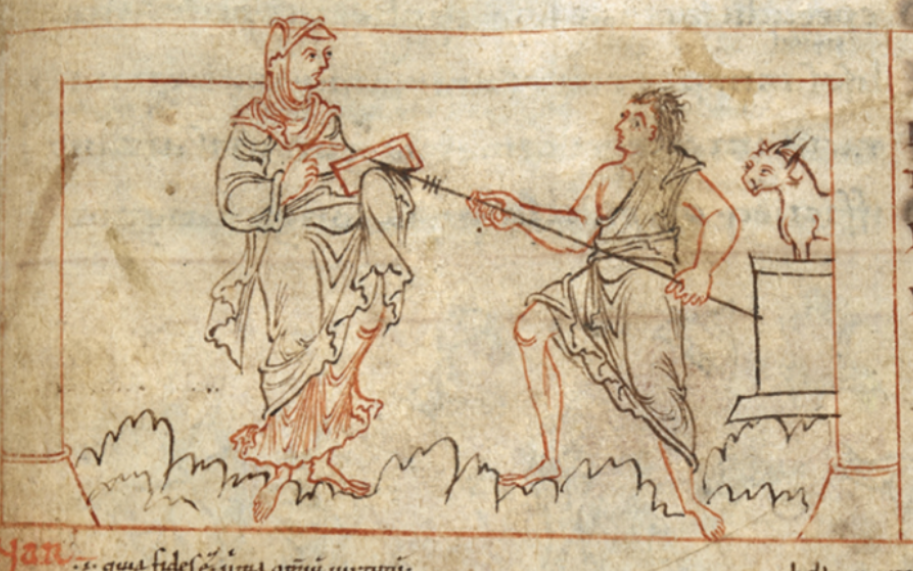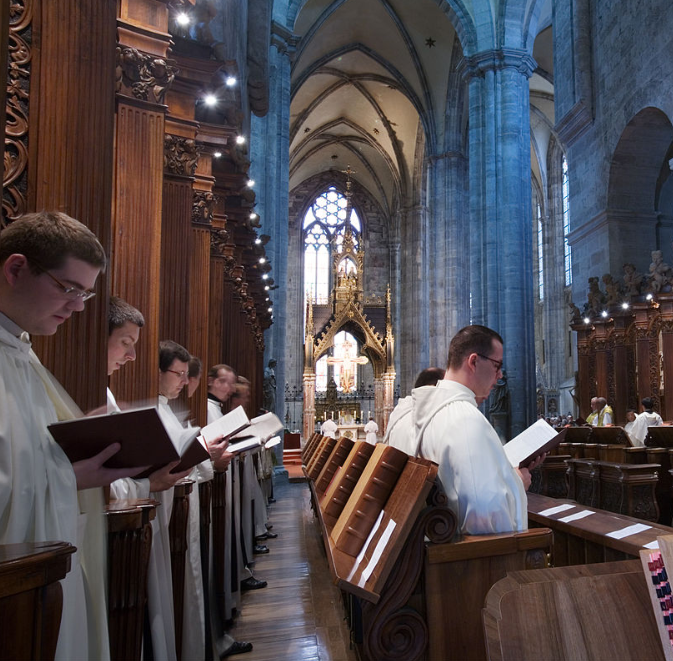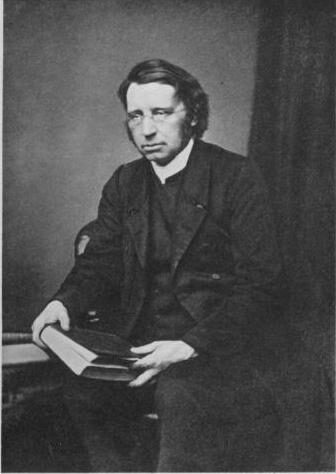Eternity is Now
Eternity is now . . . and, when you think of it, any other moment you can mention. I’m not trying to say anything particularly deep here. I’m just going back to an idea I introduced in my very first post on this blog, “Time Travel is Real.” My point there had to do with the Latin language itself:
. . . . learning the language of great men and women of the past truly does give us a direct line of communication with them. We have access to more than just their ideas. We can read and hear the exact words they used to express themselves.
And of course, the things we can read in Latin are not simply artifacts of a long vanished time. They are woven through our literature, our political institutions, and numerous other aspects of our culture. One of my purposes in creating this blog is to highlight some of those connections.
Voices of Our Ancestors
Those connections are deeper and more immediate for members of more traditionally-minded churches such as the Catholic Church. At this festive time of year, however, even non-believers can’t help but encounter the voices of our ancestors as they go about their business. This is particularly true of Christmas music. Now, I’m not talking about the omnipresent secular “Christmas” themed music. “Santa Baby” and “All I Want for Christmas is You” won’t do much to put us in touch with eternity. Although . . . well, more about that below.

“Santa Baby” and “All I Want for Christmas is You” won’t do much to put us in touch with eternity.
But here’s the point. You don’t need to darken the door of a Church this time of year to find yourself listening to more traditional music without even seeking it out. Who hasn’t heard “Hark the Herald Angels Sing” or “The First Noel“? You probably know Latin versions of many of these songs; Adeste Fideles, for instance. The carol Gaudete (“Gaudete, gaudete, Christus est natus . . .”) was a top 20 hit in the UK for the band Steeleye Span in 1973. The song was at least 400 years old at the time.
The point is, these songs aren’t artifacts. They are still a living part of our experience, as they have been for centuries. They are a living link to our ancestors.To be fair, Adeste Fideles and Gaudete, despite being originally in Latin, are only a few centuries old. The sixteenth century is practically yesterday when we’re talking about Latin. But we are still singing and enjoying Christmas songs that go back much further. One of the oldest, quite possibly the oldest, is “Of the Father’s Love Begotten.” People have been singing this song ever since poet and hymnist Aurelius Prudentius published it in the year 405 AD.
The Music and the Words
We should note that the music we associate with the song today, although ancient, has a separate history. The tune started as a plainchant in the 9th or 10th century. Over the succeeding centuries, it has undergone a number of musical embellishments (harmony, etc.) that were not part of the original tune. Eventually, somewhere between the twelfth and fifteenth centuries, the melody was joined to a Eucharistic hymn called Divinum Mysterium. The tune itself still carries that name today. It didn’t come together with Prudentius’s hymn until 1851. That’s pretty recent, as these things go.
Prudentius’s original song, on the other hand, goes back further than the music. Much further. Aurelius Prudentius was born in Hispania (Roman Spain) in the middle of the 4th century. He became a successful man of the world: lawyer, provincial governor, and eventually an aide to the emperor himself in Rome. Then, around the year 392 AD, he gave it all up. Prudentius went back to Spain and withdrew from the world. He spent the rest his time in this world living an extremely austere life. The former man of the world devoted his time to writing Christian poetry and apologetic works.

Master of Both Worlds
Like his contemporary St. Augustine of Hippo, Prudentius was a true Roman, but also thoroughly Christian. Both men fully embodied the virtues of the ancient pagan civilization, but transformed that heritage into something completely at the service of Jesus Christ. St. Augustine, of course, became and remains one of the most important figures in the development of Christine Philosophy and Theology. While Prudentius no longer has such prominence, for a long time, certainly through the Middle Ages, he enjoyed a reputation as one the great Christian poets.
Prudentius’s most influential work through most of this time was his Psychomachia, or The War of the Soul. This poem is a mini-epic allegorically representing the battle between virtues and vices in the soul of every person. Prudentius models his style in this poem on Vergil’s in his great epic, the Aeneid. The Psychomachia as a whole is not much longer than one of the twelve books in Vergil’s work, but Prudentius does incorporate the dactylic hexameter meter that Vergil himself inherited from the Greek epics of Homer. Prudentius’s allegorical treatment of the virtues and vices was copied very extensively over the next millennium.
A Hymn for Every Hour

Prudentius emulates other poets from Rome’s Golden Age in some of his other works. He employs a lyric style more reminiscent of Vergil’s good friend Horace, for instance, in the Liber Cathemerinon. The title means something along the lines of Book of Daily Prayers. It’s a collection of twelve hymns intended to be sung in the daily liturgical prayer of the Church. Like the Psychomachia, these songs have never completely gone out of use. The ninth hymn, “Hymnus Omnis Horae” in the manuscripts, is the source of “Of the Father’s Love Begotten.”
As is the case with the tune, the text has undergone some adaptation in order to become the song we know today. Hymnus Omnis Horae means “Hymn For Every Hour.” It is the only hymn in the Liber Cathemerinon that is not designated for a particular time of day or festival. Instead, Prudentius gives us the entire story of Jesus Christ in thirty-eight stanzas. He seems to intend the hymn as an answer to the Arian Heresy, which denied the full divinity and eternal existence of Christ. In his third stanza, for instance, he asserts the orthodox teaching on the Incarnation:
Now we sing His deeds and proven miracles,
The universe is witness, nor does the earth deny what it saw,
God brought forth for teaching mortals face-to-face.
Facta nos et iam probata pangimus miracula,
testis orbis est, nec ipsa terra, quod vidit, negat,
cominus Deum docendis proditum mortalibus.
The final words of the song are a ringing declaration of eternity: seculorum seculis! That is, “within ages of ages,” or as our current translation puts it, “evermore and evermore.”
The Christmas Song

The present-day Christmas song first came about in 1851 when John Mason Neale translated verses 4-9 of Prudentius’s poem, the portion dealing with the Incarnation and Nativity, into English. His music editor set Neale’s translation to the melody of Divum Mysterium. Ten years later another hymnist, Henry W. Baker, went back to Prudentius’s “Hymnus IX” and retrieved the thirty-sixth and thirty-seventh stanzas. He added these to Neale’s version, along with a Trinitarian doxology as a final stanza. You can find a Latin/English copy of the Neale/Baker version of “Corde Natus ex Parentis/Of the Father’s Love Begotten” at the bottom of this post.
You might also hear another version of the song. Roby Furley Davis published his own translation in 1906. Davis keeps the first eight stanzas of the Neale/Baker translation, and he also sets his words to the music of Divinum Mysterium. In place of Baker’s Trinitarian doxology, however, he closes with the original final stanza from Prudentius. Both versions take seculorum seculis (“evermore and evermore”), which which appear only as the final words of Prudentius’s hymn, and use them as a refrain after each stanza.
Evermore and Evermore: A Promise of Eternity
“Evermore and evermore” is a fitting refrain. It’s fitting, to begin with, because it expresses an important theme of the original, much larger, hymn: the eternal existence of Jesus Christ. It is also a reminder to Christian believers of Christ’s promise, the final words of Matthew’s Gospel: “I am with you always, to the close of the age.” (Matthew 28:20) In the Latin of the Vulgate Bible, by the way, that’s ego vobiscum sum omnibus diebus usque ad consummationem saeculi. Notice that the refrain seculorum seculis echoes Jesus’ last word, which is itself a promise of eternity.

Seculorum seculis is, in fact just a poetic way of expressing eternity. When we sing this song we get a little taste of forever. Eternity is now, after all. There’s something about song that turns abstract concepts into concrete experiences. St. Augustine supposedly said, “Whoever sings prays twice.” As it happens, he may not have actually said it, but there’s still some truth in the saying nevertheless. Take the schlocky “Christmas” songs (most of which actually have little or nothing to do with Christmas itself) that blare through the PA systems of retail stores from Thanksgiving through December 24th. They’re the only place that we still experience musical styles that died out decades ago. More importantly, they bring back (mostly) happy memories (and feelings and smells . . . ) of Christmases we celebrated and of people we knew over our lifetimes.
Standing With Eternity
If even those hackneyed tunes have at least that much virtue in them, how much more so this truly joyful hymn, begotten of the heart of a man who left the allure of worldly success to give his life to Jesus. Sixty human generations or more have passed since Aurelius Prudentius first published hymn IX of his Liber Cathereminon. We still sing it today as the Christmas carol “Of the Father’s Love Begotten.”
Every time we sing it or listen to it, we stand with the previous sixty-odd generations of forebears who sang the same song. When we sing or listen to it to celebrate the birth of Jesus Christ, we stand in the presence of the Alpha and the Omega who was before time began, entered into time in a stable in Bethlehem, and has invited us to stay with him after time is no more. Eternity is now.
Featured Image top of page: Adoration of the Child, by Gerard van Honthorst, c. 1620
Corde Natus es Parentis/Of the Father’s Love Begotten: Videos
Below you can find this song two of the many performances of this song available online. The first is a beautiful Latin version, Corde Natus ex Parentis, from Corpus Christi Watershed. The second is an English version by Diana Pierce provided by St. Peter’s Church, North Wales.
Finally, under the video clips I’ve posted a downoadable PDF copy of the Neale/Baker version of “Of the Father’s Love Begotten,” and one of Prudentius’s original Hymnus Omnis Horae. Both are in Latin and English.